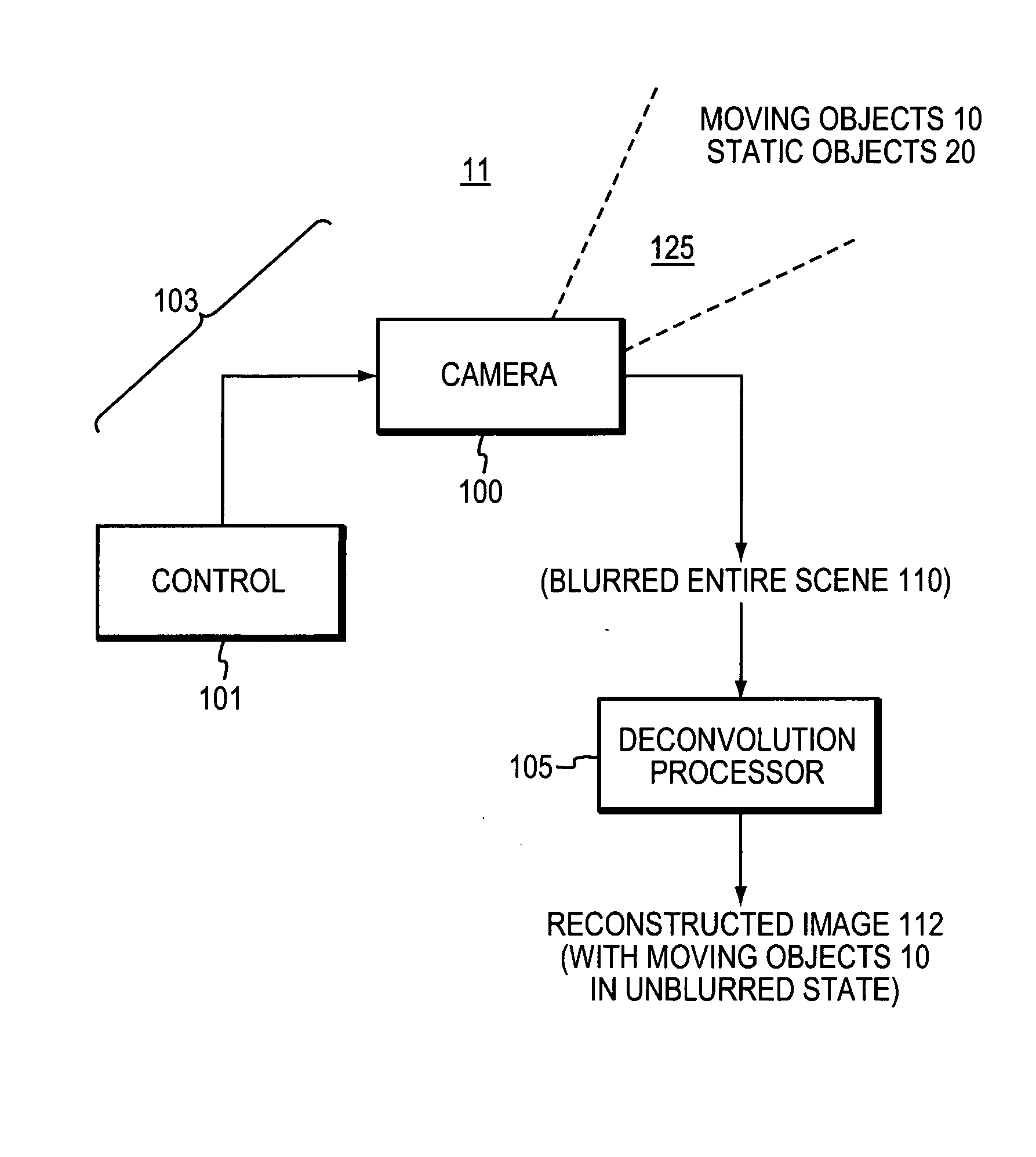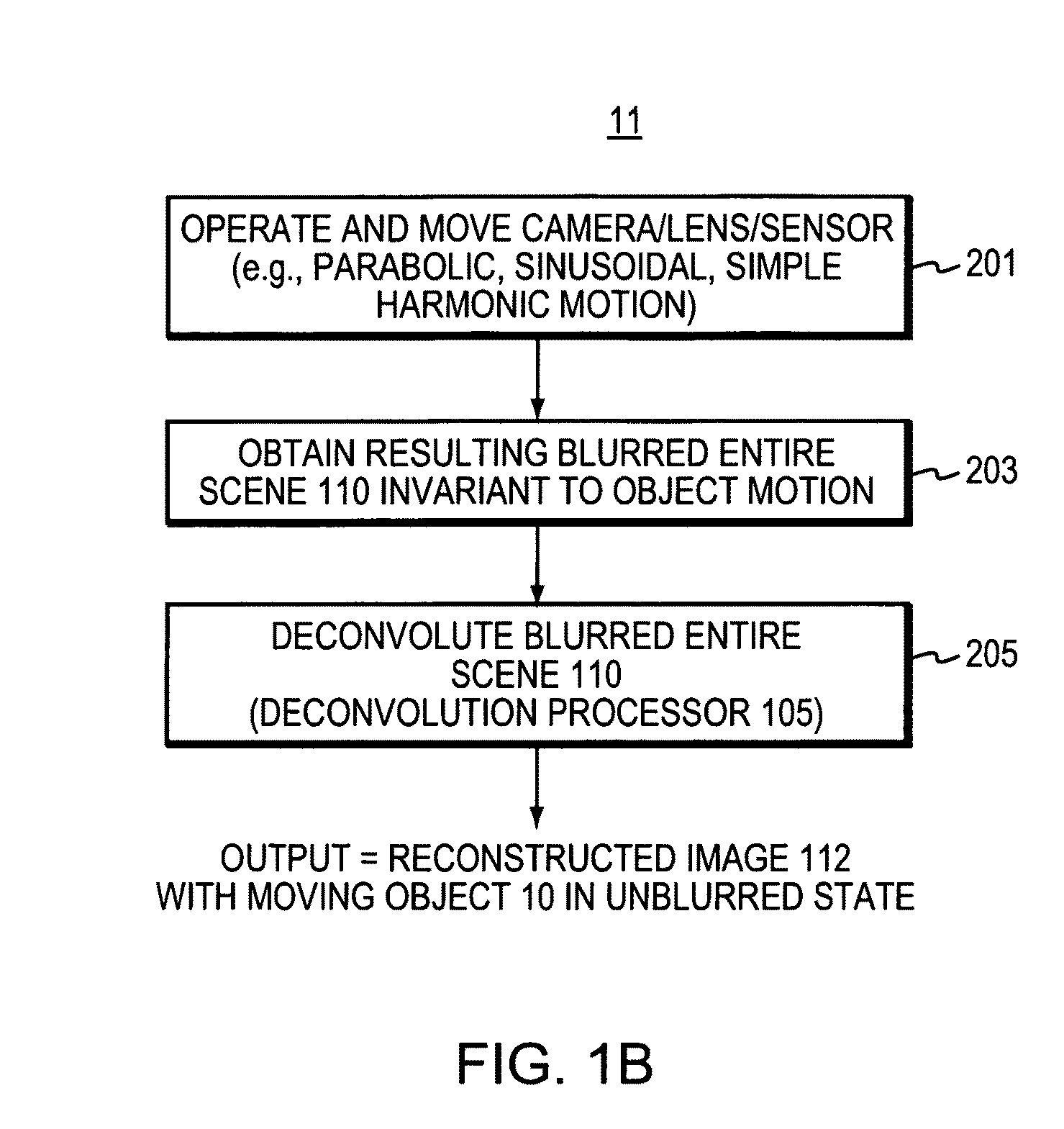Method and apparatus for motion invariant imaging
- Summary
- Abstract
- Description
- Claims
- Application Information
AI Technical Summary
Benefits of technology
Problems solved by technology
Method used
Image
Examples
Embodiment Construction
[0027]A description of example embodiments of the invention follows.
[0028]Applicants' approach is inspired by wavefront coding (Cathey, W., and Dowski, R., “A new paradigm for imaging systems,”Applied Optics, No. 41, pgs. 1859-1866, (1995)), where depth of field is improved by modifying a lens to make the defocus blur invariant to depth and easy to invert. While the cited work deals with wave optics and depth of field, applicants and the present invention consider geometric ray optics and remove 1D motion blur.
[0029]By analyzing motion blur as integration in a space time volume over curves resulting from camera and object motion, applicants prove that one integration curve that results in a motion-invariant PSF (point-spread function) is a parabola. This corresponds to constant 1D acceleration of the camera, first going fast in one direction, progressively slowing down to a stop and then picking up speed in the other (opposite) direction. As a result for any object velocity within a...
PUM
 Login to View More
Login to View More Abstract
Description
Claims
Application Information
 Login to View More
Login to View More - R&D
- Intellectual Property
- Life Sciences
- Materials
- Tech Scout
- Unparalleled Data Quality
- Higher Quality Content
- 60% Fewer Hallucinations
Browse by: Latest US Patents, China's latest patents, Technical Efficacy Thesaurus, Application Domain, Technology Topic, Popular Technical Reports.
© 2025 PatSnap. All rights reserved.Legal|Privacy policy|Modern Slavery Act Transparency Statement|Sitemap|About US| Contact US: help@patsnap.com



